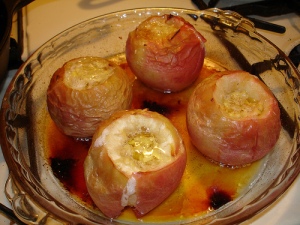I bought a few cans of coconut milk the other day and found, as often happens, the coconut milk had separated into cream at the top of the can with the water condensing in the bottom. This separation of the solids and liquids, I realized, is the perfect way to add a creamy element to a lot of different foods.
My first thought was using these coconut milk solids (the coconut cream) to make icing, since they had a texture similar to chilled butter, albeit a bit creamier and less dense. However, I didn’t feel like messing with paleo flours to bake a cake or brownies, but I still wanted to mess around with the cream a bit.
Then it hit me. If I mixed the coconut cream with a nut butter and some melted chocolate, it would develop a fudge-like consistency. Or that was my hope. So I gave it a try, and it worked. The result was a creamy, low-carb, vegan, paleo, tasty fudge with the perfect texture and the exact right level of sweetness.
You’ll need to use canned coconut milk here – the full-fat kind, not lite coconut milk. Usually you can tell if the solids and liquids have separated by giving the can a shake and listening. There won’t be a liquid sloshing sound. If, for some reason, it hasn’t separated, then you can refrigerate the unopened can overnight, which should do the trick.
The cans of coconut milk where this is most likely to happen are those without any additives or emulsifiers – so check the ingredients and make sure it only lists coconut cream and water. This is the type that is most likely to separate.
When you open the can, pour away the water and use a rubber spatula to scrape all of the solid coconut cream out. Some stores also sell coconut cream, and you can use that, as well.
Choose a nut butter that works with your diet. If you’re paleo, sugar-free, organic almond butter works well here. If you’re not paleo, then use organic, sugar-free peanut butter instead. I don’t specify an amount of liquid stevia (for paleo), or liquid sucralose (for non-paleo, low-carb) because sweetness preferences vary. I tend to like my dessert not very sweet, so I don’t add a lot of sweetener. To get the right amount of sweetness, add a bit of the liquid sweetener (5-10 drops), taste, add more, taste – and continue until you reach the desired sweetness level.
Chocolate Nut Butter Fudge
- 2 ounces unsweetened dark, vegan chocolate
- 1/3 cup nut butter
- 1 (14-ounce) can full-fat coconut milk, drained or 3/4 cup unsweetened coconut cream
- 1 teaspoon vanilla
- Liquid stevia or liquid sucralose to taste
- Line an eight-inch square pan with parchment.
- In your microwave or on the stove, melt the nut butter and chocolate. If melting on the stovetop, do it on low heat and stir frequently. In the microwave, cook on high for 30 seconds, stir, and repeat until smooth.
- In a medium-sized bowl or stand mixer, beat the melted chocolate and nut butter, coconut cream, vanilla, and sweetener until smooth. Taste and add more sweetener as desired.
- Pour into the prepared pan using a rubber spatula to spread it in an even layer. Freeze for one hour. Cut into squares, and store the fudge in a zipper bag in the fridge or freezer.
photo credit: Coffee Fudge via photopin (license)

 by
by  by
by  by
by 






